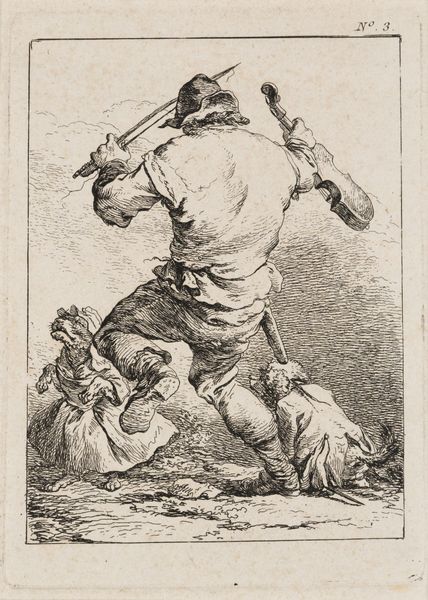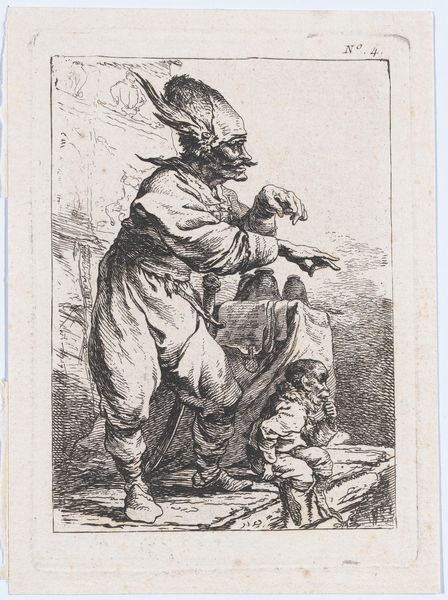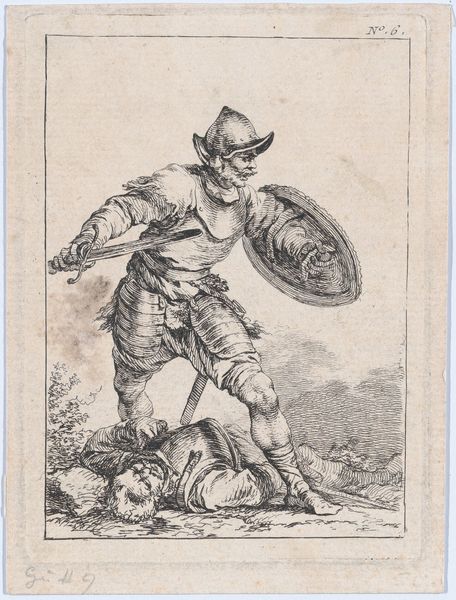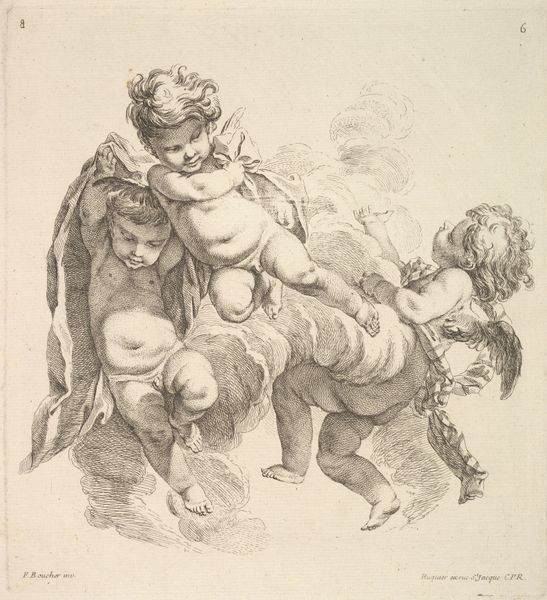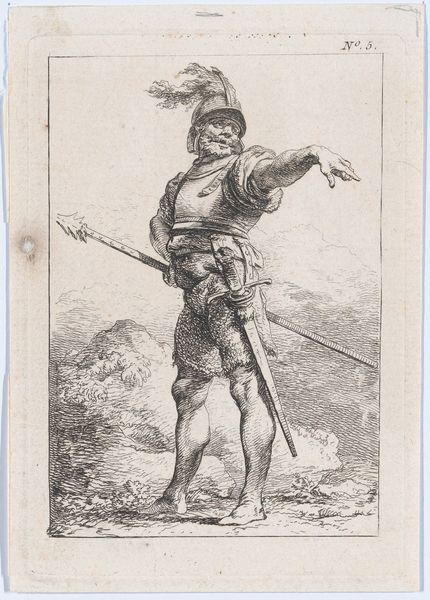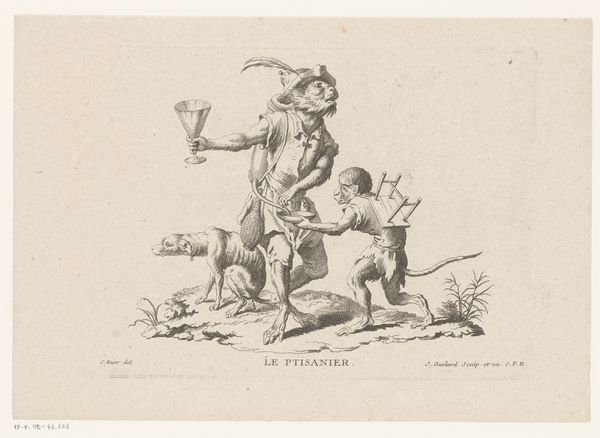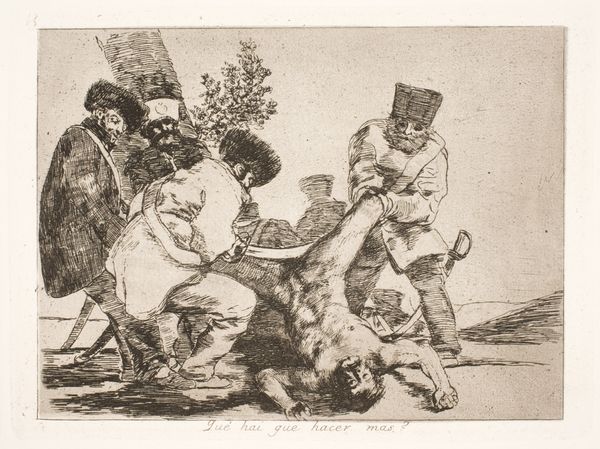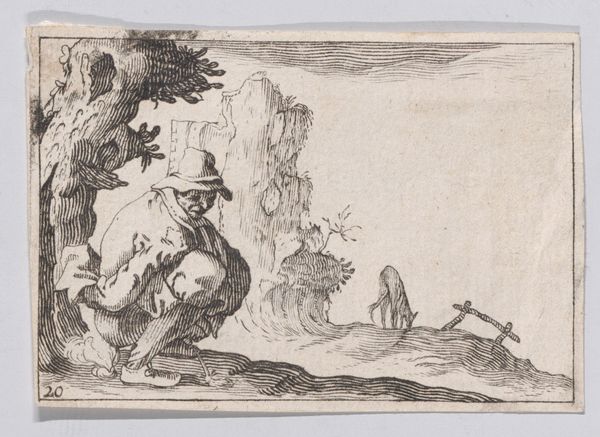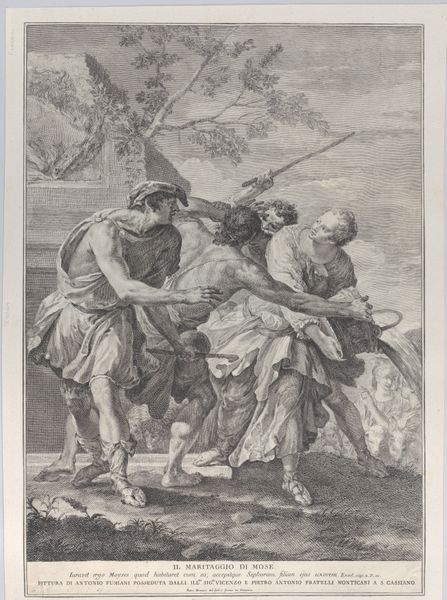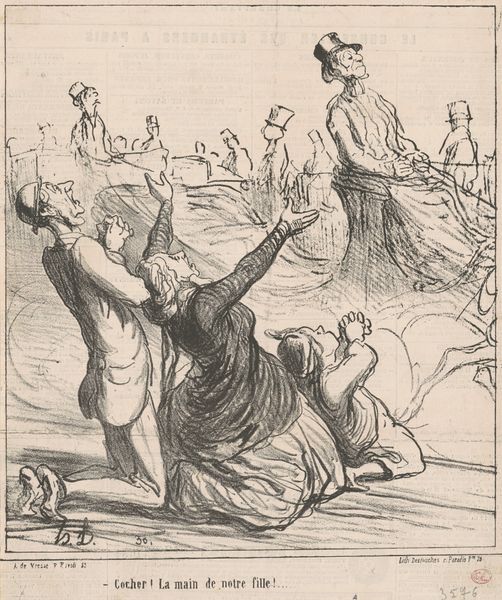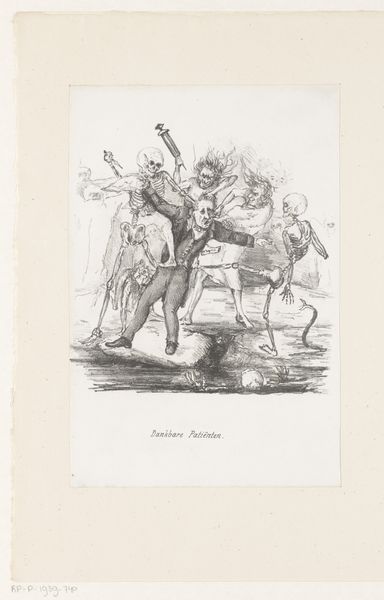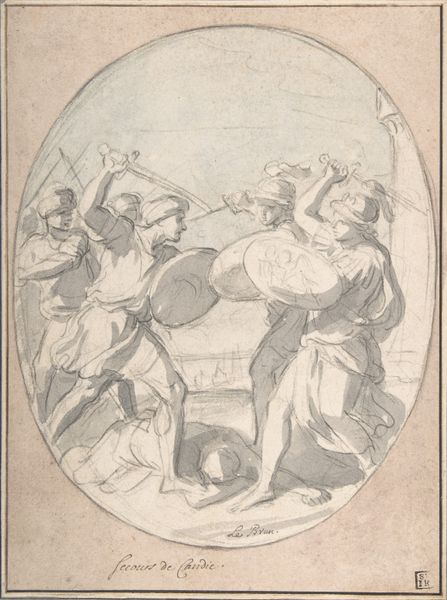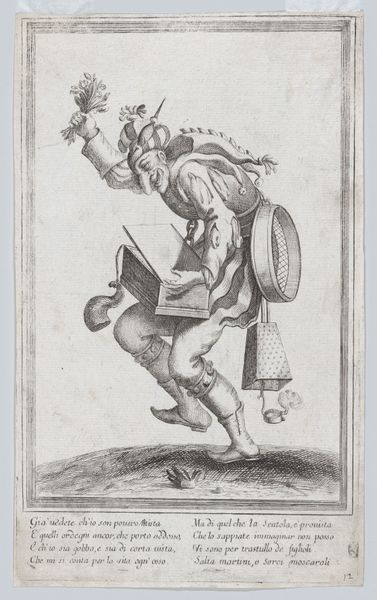
Dancing Man, Holding a Violin, Seen from Behind 1755 - 1771
0:00
0:00
Dimensions: Sheet: 5 3/16 × 3 3/4 in. (13.2 × 9.5 cm)
Copyright: Public Domain
Editor: We are looking at "Dancing Man, Holding a Violin, Seen from Behind," a print by Philippe Jacques de Loutherbourg, dating roughly between 1755 and 1771. What strikes me immediately is the dynamism, but also the slight absurdity of the figure's pose. How does the socio-cultural context inform this work? Curator: That's a perceptive reaction. The absurdity, as you call it, aligns with the rise of caricature in that period, a tool often used to critique social mores. Consider the print’s distribution method; it would have been reproduced and sold, a fairly democratic way for satirical ideas to spread, thus prompting thought and discourse among wider audiences. Does this change your reading of the image? Editor: Definitely. It makes me think less about individual eccentricity and more about a commentary on society at large. Perhaps the figure represents a type, not an individual? Curator: Precisely. Think about the theatricality implied in the image – dancing, violin. Ask yourself: what power structures might be at play, and how might those power dynamics be inverted, challenged, or affirmed through visual satire? Editor: So, is the print arguing that the man’s performance of being in high spirits is absurd? Or rather, commenting on how the high spirited nature in baroque Era had some affect on society. Curator: Precisely, or even how displays of refined culture become weapons in social competition. The man almost appears aggressive, weaponizing his cultural affectations against someone or some group outside of the sphere he claims to perform. Also, how does the choice of printmaking, as opposed to painting, inform our understanding of its message and circulation? Editor: I hadn't thought of that, the accessibility of print would allow greater distribution and discourse. Curator: Exactly. Ultimately, understanding the piece requires a multifaceted approach, considering both its artistic qualities and the societal forces it engages with. I think analyzing prints from the Baroque Era opens windows into past social structures, helping us trace how opinions were cultivated, as well as disseminated, shaping cultures past and present. Editor: It’s fascinating how one image can tell such a complex story! Thanks, this was insightful.
Comments
No comments
Be the first to comment and join the conversation on the ultimate creative platform.
